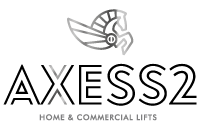The field of lift technology has made substantial advancements in recent years, leading to a complete revolution in the way we move around buildings. Through improvements in energy efficiency and the integration of intelligent features, modern lifts have evolved beyond mere transportation devices. They now play a vital role in improving a building’s overall efficiency and ensuring user satisfaction. With these impressive technological advancements, property owners and managers are strongly encouraged to contemplate upgrading or replacing outdated lift systems.
Energy Efficiency
A significant advancement in lift technology focuses on improving energy efficiency. Modern lifts now incorporate regenerative systems, which can capture and utilise the energy produced during the lift’s descent and deceleration. This energy is then redirected back into the building’s electrical system. This technological breakthrough not only reduces the overall energy consumption of the building but also contributes to a greener and more sustainable environment, which is an important consideration in our current environmentally conscious society.
Smart Lifts
Smart lifts employ sophisticated algorithms and real-time data to improve their performance, resulting in reduced wait times and enhanced movement management within buildings. Features like destination-based dispatch, where passengers indicate their desired floor before boarding and are directed to the most suitable lift, simplify the user experience, and increase overall efficiency.
Connectivity and Integration
Today, lifts are experiencing a growing level of connectivity as they seamlessly integrate with building management systems and smart building technologies. This integration enables the capability of real-time monitoring and diagnostics, facilitating proactive maintenance and minimising downtime. Additionally, when integrated with security systems, lifts can enhance safety measures by limiting access to specific floors and offering emergency communication features.
Design and Customisation
Advancements in list technology have also expanded to include design and customisation possibilities. Modern lifts provide a diverse selection of aesthetic options, enabling them to seamlessly integrate with the interior design of the building or serve as distinctive architectural elements. Customisable lighting, panels, and displays not only enhance the visual allure but also enhance the user experience by offering clear and intuitive information.
Safety Improvements
Safety continues to be of great importance in lift technology, and recent progress has greatly enhanced the safety features of current lift systems. Lifts are now safer than ever before, thanks to advancements like advanced door sensors, emergency communication systems, and improved braking mechanisms.
The Case for Upgrading
With the progress in technology, there is a strong argument for upgrading or replacing an obsolete lift system. By transitioning to a more energy-efficient system, significant savings can be achieved in the long run, reducing the overall operational expenses of the building. The introduction of smart lifts not only improves efficiency but also enhances the user experience, making the building more appealing to tenants and visitors, potentially increasing its value. Additionally, modern lifts offer enhanced safety features and design flexibility, contributing to a secure and visually pleasing environment.
The progress in lift technology provides compelling reasons to contemplate upgrading or replacing obsolete lift systems. By embracing these advancements, property owners and managers can improve the efficiency, safety, and user experience of their buildings, thereby increasing their appeal and sustainability in the long run. In a time where technology is rapidly reshaping our constructed surroundings, staying ahead of the game in lift technology is not merely a financial investment in your building, but also a forward-thinking investment in the future.

